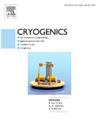304型不锈钢低温力学试验的历史回顾——现状与展望
IF 2.1
3区 工程技术
Q3 PHYSICS, APPLIED
引用次数: 0
摘要
在奥氏体不锈钢中,304型在整个工业中无处不在。虽然我们冶金界倾向于认为304型及其变种(L, H, N, HN, LN, LHN)已经得到了详尽的研究,但含有低温力学性能的资源是分散的。这篇综述试图通过将尽可能多的关于低温力学行为的现有文献整合到现代资源中来部分补救这种分散。技术进步可能需要合金的性能超过我们目前经过验证的真实系统,然而,冶金界还没有完全耗尽传统合金可以用于新应用的参数空间。当新的应用出现时,工业倾向于利用现有的具有合格和可靠的产品流的合金,而不是在合金设计方面重新发明轮子。这并不是说合金开发是毫无根据的,相反,工程师们首先选择将这些传统合金的大量信息/数据纳入其工艺设计和优化中。与此同时,仍在努力优化304型,甚至进一步利用新的后处理处理和制造技术。本文综述了304型低温力学性能的历史实验,并介绍了其低温强度的热诱导和变形诱导马氏体转变。重点讨论了试验温度和应变速率的影响,并对Split-Hopkinson压杆试验、Charpy冲击试验和多轴试验进行了简要介绍。简而言之,马氏体形成的影响已经得到了充分的研究,特别是当它与给定测试和温度下的转变量有关时。在准静态应变速率下,马氏体形成是相变诱发塑性(TRIP)的主要强化机制。在较高的应变速率下,局部绝热加热抑制了相变的程度。然而,尽管这一趋势在低温和低应变速率下似乎是一致的,但仍然需要了解低温和高应变速率试验的马氏体转变水平,因为它与机械试验的轴向性和应力状态有关。本文章由计算机程序翻译,如有差异,请以英文原文为准。
A historical review of cryogenic mechanical testing on Type 304 stainless steels – state of the art and current outlooks
Of the austenitic stainless steels, Type 304 has become ubiquitous throughout industry. While our inclinations as a metallurgical community may be to assume that Type 304 and its variants (L, H, N, HN, LN, LHN) have been exhaustively investigated, the resources containing the cryogenic mechanical properties are scattered. This review seeks to partially remedy this scatter by consolidating as much of the available literature on the cryogenic mechanical behavior into a modern resource. Technological advances may require alloys with properties exceeding that of our current tried and true systems, however, the metallurgical community has not fully exhausted the parameter space that legacy alloys can have for new applications. Rather than reinventing the wheel as it pertains to alloy design, industry tends to leverage existing alloys that have qualified and reliable product streams for when new applications arise. This is not to say that alloy development is unwarranted, rather, engineers first choose to incorporate the plethora of information/data that already exists for these legacy alloys into their process design and optimization. Along with this, there are still ongoing efforts to optimize Type 304 even further by leveraging novel post-processing treatments and manufacturing techniques. This review summarizes the historical cryogenic experiments on the mechanical properties of Type 304, and provides a description of both thermally-induced and deformation-induced martensite transformations that are responsible for its cryogenic strength. The effects of test temperature and strain-rate are focused on, as well as brief descriptions of Split-Hopkinson pressure bar testing, Charpy impact testing, and multiaxial testing. In short, there exists a well-studied effect of martensite formation, particularly as it pertains to the amount of transformation for a given test and temperature. At quasi-static strain-rates, martensite formation is the dominant strengthening mechanism by means of transformation induced plasticity (TRIP). At higher strain-rates, localized adiabatic heating suppresses the degree of transformation. However, while this trend appears to be consistent at low temperatures and low strain-rates, there still exists a need for understanding of the level of martensitic transformation for both cryogenic and high strain-rate tests, as it pertains to the axiality and stress state of the mechanical test.
求助全文
通过发布文献求助,成功后即可免费获取论文全文。
去求助
来源期刊

Cryogenics
物理-热力学
CiteScore
3.80
自引率
9.50%
发文量
0
审稿时长
2.1 months
期刊介绍:
Cryogenics is the world''s leading journal focusing on all aspects of cryoengineering and cryogenics. Papers published in Cryogenics cover a wide variety of subjects in low temperature engineering and research. Among the areas covered are:
- Applications of superconductivity: magnets, electronics, devices
- Superconductors and their properties
- Properties of materials: metals, alloys, composites, polymers, insulations
- New applications of cryogenic technology to processes, devices, machinery
- Refrigeration and liquefaction technology
- Thermodynamics
- Fluid properties and fluid mechanics
- Heat transfer
- Thermometry and measurement science
- Cryogenics in medicine
- Cryoelectronics
 求助内容:
求助内容: 应助结果提醒方式:
应助结果提醒方式:


